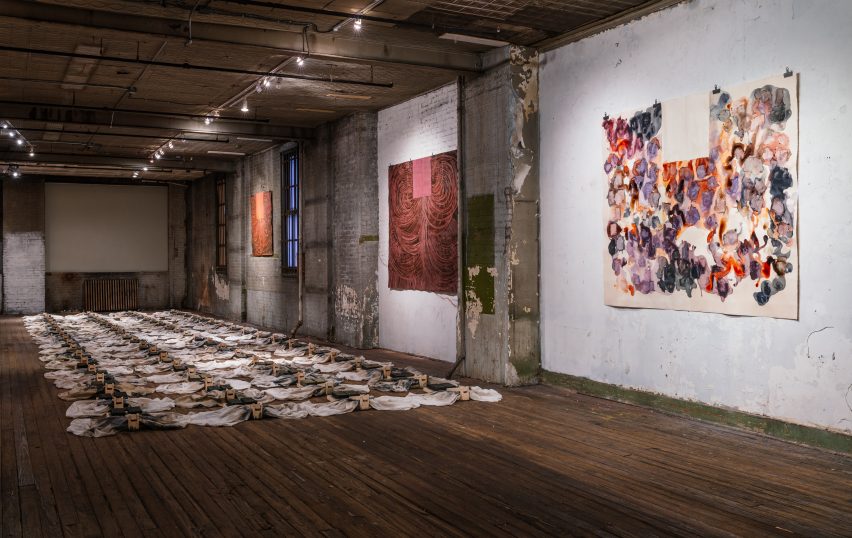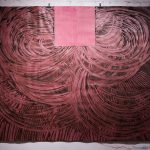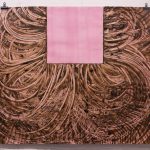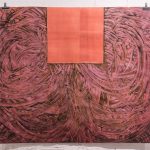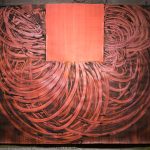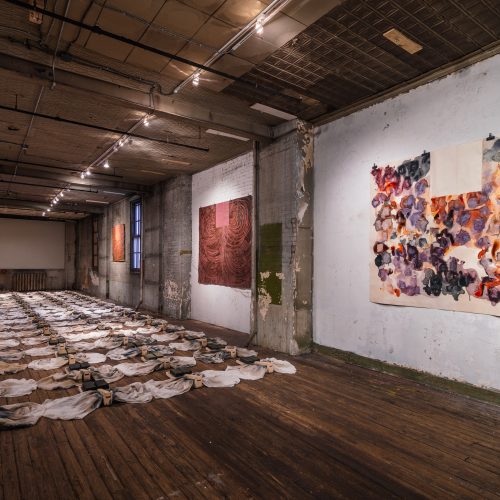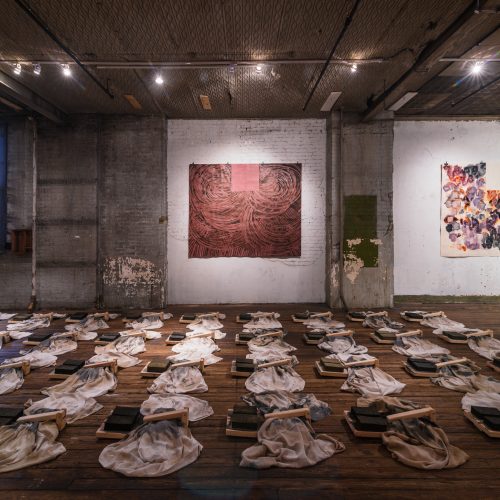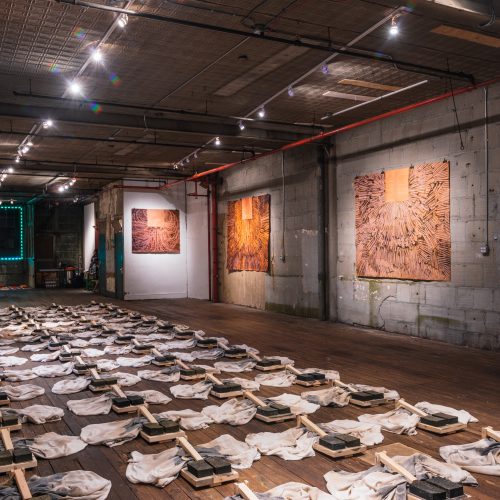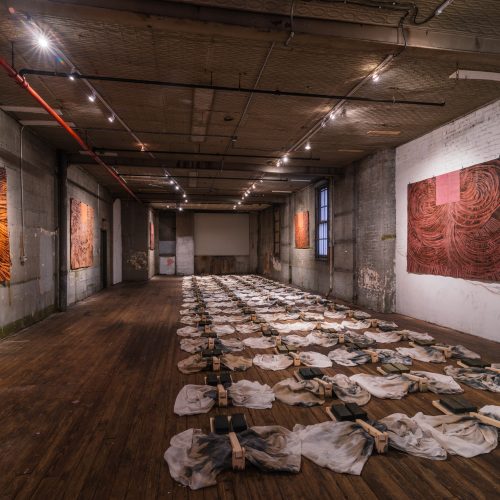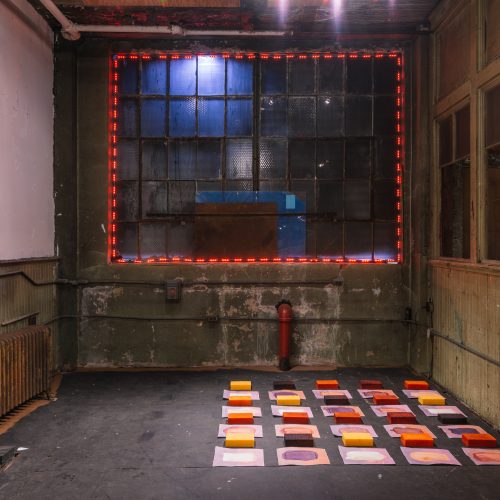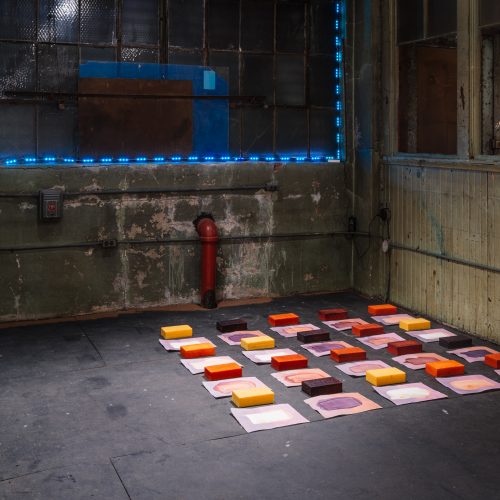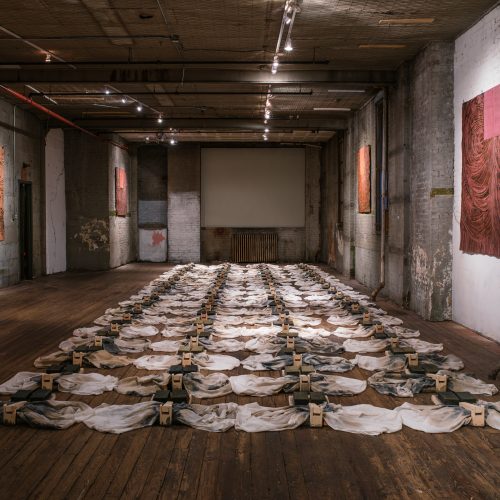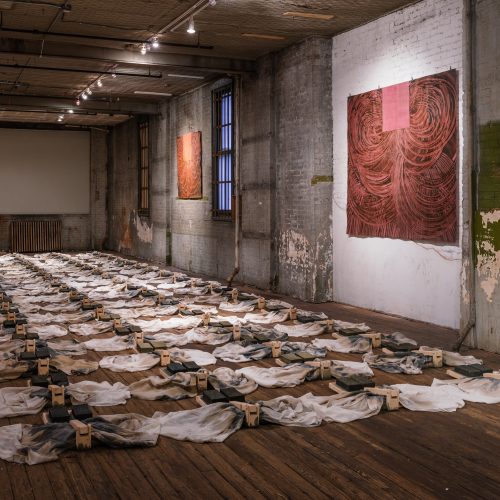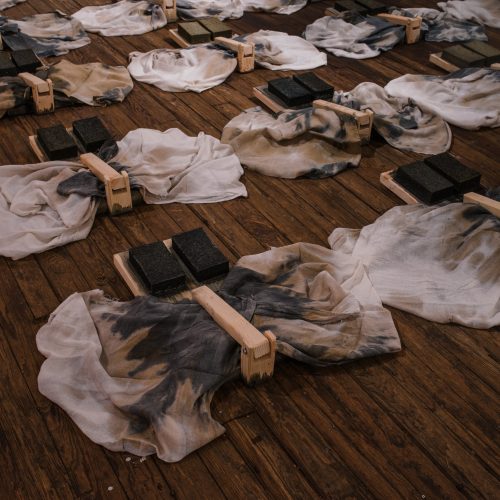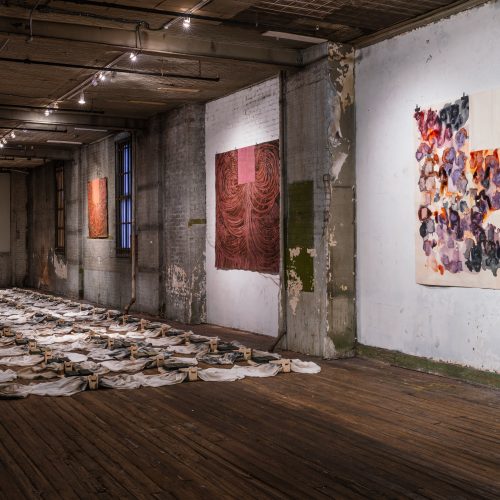Warm is a Black
2018
Ballon Rouge Collective is proud to present our first New York project, Warm is a Black, by Carmen Argote. Curated by Kathy Battista, Warm is a Black presents new work by Argote including a series of paintings and a large, floor-based sculpture that commands the space. The exhibition is the culmination of the artist living and working in a domestic environment in East Harlem for one month prior to the show. Responding to the local culture of El Barrio, and drawing on her site-responsive practice, the artist has created a body of work that resonates and converses with the raw space at E104th Street, while resisting a white cube aesthetic.
The exhibition as a whole is dominated by a palette of blacks, greys, and reds drawing on the history of native plants and technologies. Avocado and iron were traditionally used to create black dye. Today avocados have become de rigeur for a luxury lifestyle; the ubiquitous demand for these has resulted in the substitution of foreign varieties in the place of native crops. Avocados are now called “green gold” in Latin America, with the ideal crops destined only for export. Warm is a Black refers to the warmth of the dye as well as the transformation of this substance into a color. Rather than the shiny black of industrial paint, Argote’s warmer, matte, more natural tones are reflective of both the materials and the process that she uses. The title also refers to the generosity of spirit found in many economically marginalized communities, despite their challenging circumstances.
Argote’s new paintings on oil paper continue her interest in process-based creation, historical research, personal memory, and the use of natural elements. She begins by coating a paper surface with a cochineal dye. Derived from an insect that grows on the Nopal plant, cochineal was considered precious to the Native peoples of Latin America as it was the only means to create a vivid red. This base is then covered by a strained mixture of avocado and oil painting medium that is pushed across the paper by the artist, who kneels on a demarcated section of the paper—a reference to market traders who spread their wares in front of them on a plain muslin cloth. Because the paintings are created from non-traditional materials, they will transform over time through oxidation. One can see the traces of bodily presence and absence in the paintings: the empty square that the artist once occupied and the expressive marks that emanated from her.
A large floor-based sculpture, Exprimidos, consists of rudimentary wooden tortilla presses on which the artist has placed sponges dyed with a mixture of avocado and iron. Argote used the presses to squeeze the sponges, resulting in the staining of raw silk fabric placed underneath. The sponges both capture and release the dye, suggesting again a performative process with socio-political connotations of labor, ritual and tedium. These sculptures acknowledge the global corporate infrastructure that literally squeezes their workers, increasing profits by capitalizing on cheap labor. While the biped placement of the sponges recalls human feet, standing, and gravity, the arrangement of the works on the floor is a grid. Subverting the clinical precision of a modernist gesture, the sculptures embrace chance and native technology. They find an appropriate home in the unfinished gallery space.
